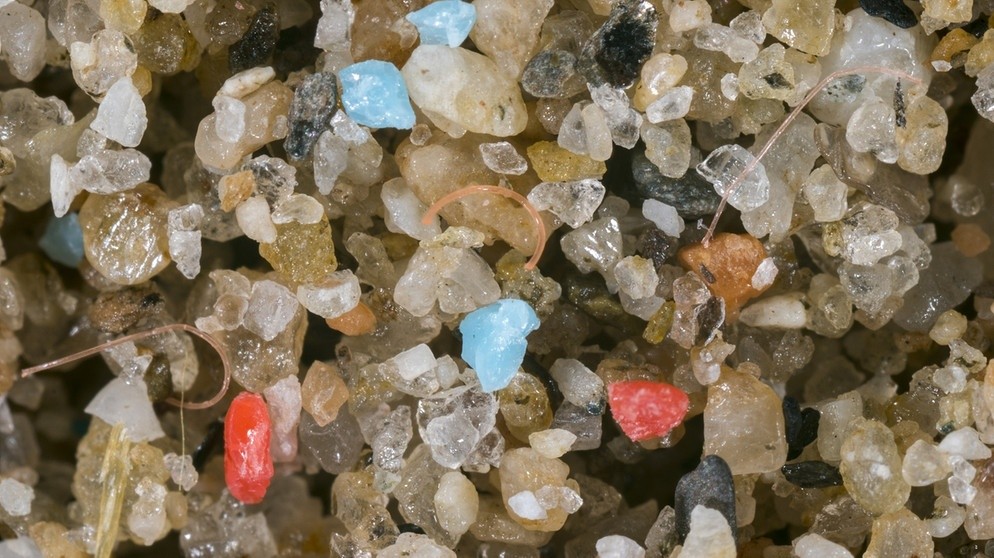The negative impact of plastic in aquatic ecosystems has been observed by scientists and the public for some time. From images of plastic swirls in the ocean to findings of microplastics in marine life. The discussion about the consequences for plants, animals and humans is omnipresent.
However, plastic can now also be found in our agricultural soils. NABU estimates that total plastic emissions into agricultural soils amount to at least 19,055 tonnes per year, of which around 19 % can be attributed to the agricultural sector itself. The majority of this, just under 70 %, is introduced into the soil through components in fertilisers. The rest is generated by soil improvement, plant protection products and seeds, as well as plastics in fodder production, plant aids and containers and irrigation systems.
The remaining 81 % of total emissions are not attributed to agriculture, although just over half of these are caused by the application of sewage sludge, a practice for which agriculture is responsible. A further 38 % are attributable to littering. The remaining 8 % are caused by littering in composts.
While the consequences of plastics in oceans and rivers are being intensively researched, there are still gaps in the analysis of terrestrial ecosystems. Based on current knowledge, however, the impact of plastics can already be roughly estimated.
Plastics in soil can change the physical properties such as storage density, pore volume and water content of soil and thus have an influence on its ecosystem function. The influence essentially depends on the size of the plastic particles. For example, small particles can result in better soil aeration and larger plastic fibres can lead to channel formation, i.e. increased water transport and thus to the drying out of the soil. Studies also show an influence on the pH value and a change in the chemical properties of the soil due to the leaching of additives and plastics. As has already been observed in bodies of water, microplastics accumulate pollutants on the surface and could therefore also lead to increased pollutant transport in soil and groundwater. More detailed research in this regard is still pending.
In addition to this indirect toxicity caused by pollutants, direct toxicity can also be assumed. The particles can cause damage to the tissue and membranes of organisms. Nanoparticles, which can pass through cell walls and be absorbed by plant roots due to their small size of 50-100 nm, pose a particular risk. The respective effect depends on the type of plastic.
Larger soil organisms such as earthworms and other animals in the soil also ingest microplastics directly or through the food chain. There is evidence of impairment of vitality, enzyme activity, growth and the immune system of the organisms. An impact on humans through the consumption of contaminated plants or animal products contaminated by animal feed is conceivable and requires further research.
To reduce plastic emissions, educational initiatives are needed in agriculture to increase the recycling rate or replace conventional plastics with more degradable materials. There is also a need to develop suitable measurement methods to check the respective soil pollution. The law can also set further requirements and tighten the limit values for plastics as foreign components and limit the degradation time for plastic applications in the environment. NABU is also calling for a limit on the application of sewage sludge.
Further information can be found in the report by the Fraunhofer Institute for Environmental, Safety and Energy Technology UMSICHT and Ökopol on behalf of the German Nature and Biodiversity Conservation Union NABU.
In any case, plastics in soils are a burden on our ecosystem that has so far received too little attention. The MuP Group will therefore be focussing more on this area in future in order to make a further contribution to a healthy environment. Engineering for a better tomorrow.
#Microplastics #engineeringforabettertomorrow #mupgroup


